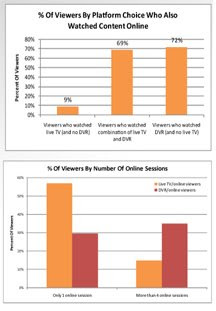
Reading the comments filed after Umair Haque's post The Value Every Business Needs to Create (hat tip: Valeria Maltoni) is a real treat.
Some people get it as a new definition of corporate responsibility and societal sustainability. Some people do not out of a cross between practicality and complacency. The answer, as always, is somewhere in between.
Haque is director of the Havas Media Lab and his work appears at Harvard Business Publishing. I read his stuff from time to time because he tends to ask "why not" more often than "why." But I have to admit I don't read his work faithfully because sometimes it reads as the continuous gauntlet being thrown down at private sector business. There is nothing wrong with that; someone needs to do it. Wingnuts often provide solutions even if you don't agree with the more uncompromising solutions.
He's right in that, as a whole, "health care industry profits, but Americans get poor health care. Automakers fought tooth and nail against making sustainably powered cars. Manufacturers of all stripes stay mum about environmental costs. Clothing companies can't break up with sweatshop labour." Etc. Add to that public relations firms, as a whole, have become complacent, weaving in the same old tired buzz words into poorly targeted, mass distributed news releases. (TechCrunch ought to add "leading company" to the list.)
His uncompromising position is still a bitter pill for many to entertain on a regular basis because businesses would give these things to Americans if Americans would be prepared to pay for the early adoption portion prior to mass distribution, much like they were willing to pay for flat screen televisions. Mostly, we aren't. Often, it takes an atrocity, tragedy, or visionary investment to shock the existing system enough to elevate something better. Otherwise, change happens in tiny drips.
Copywrite, Ink. Turns 18
Understanding this is the primary reason our company is turning 18 years old this month whereas so many others (including firms that used to be among the top agencies in the state) closed their doors. Most played systems that worked until they played out. Others tried to force innovations that no one wanted. A few adopted the language (integrated communication, for example) but not the meaning behind the words, cheapening the entire concept.
We're a bit different in that while we have all the skill sets available to transform floundering communication plans (and sometimes the aging operations to go with them) into winners, we don't begrudge those who want their point of entry to be the same old. In other words, we know a start-up company would be better off developing a core message before a logo, but there is no need to talk ourselves out of the relationship. (Not every date is ready to talk about kids before the first kiss.)
Politics is very much like that. As unfortunate as it is, politics requires politicians to sacrifice some tenets in order to get in the door. It used to be a path of compromise; nowadays, for many of them, it's better described as submission. As the first campaign manager we ever worked with once said, "change is great and necessary, but you cannot enact change until you get elected."
Business communication is very much like that too. You cannot prove your performance until you're working on the account. Change is much easier to enact from the inside out, which is how our company evolved to provide five services with agencies or companies able to customize the services they needed from us.
Ideally, we'd often do it differently, but there are just too many people who will say something requires too much heavy lifting. Usually, it doesn't. It only seems like it does because, for the person making that claim, it might be very heavy indeed.
As much as we'll enter where our client would like us to, Copywrite, Ink. continues to find new ways to evolve from its early entry as a writing services firm in 1991 (at a time when there was no such business). From there, we've added services such as creative direction (1996), strategic direction (1999), social media (2003), and opposition and market research (2006). In sum, we provide any number of single services or deeper than traditional full service, depending on client need.
What's next? There is always something in the works. But for now, we just decided it was time to provide our clients, colleagues, and friends a high-touch thank you and an invitation for a cup of tea. It makes sense to me. For all the talk of technology and employees being told of takeovers via tweet links, nothing beats the occasional face to face.
And what about your company? Is it running thin on value or thinking thick to keep pace with a world that promises to look very different? While we're always happy to chat with anyone to fill niche needs, we're especially interested in sitting down to discuss the real definition of integrated communication.


































